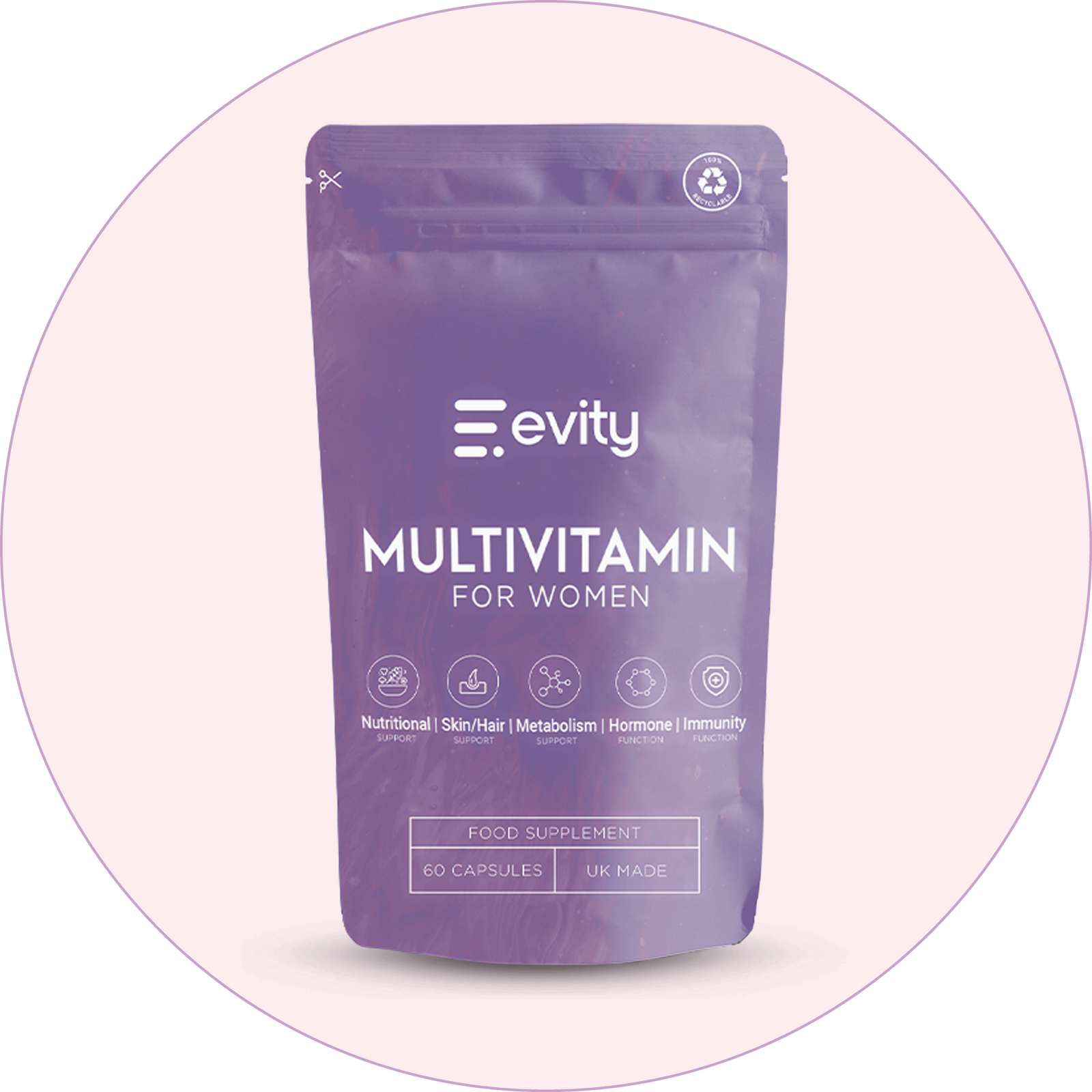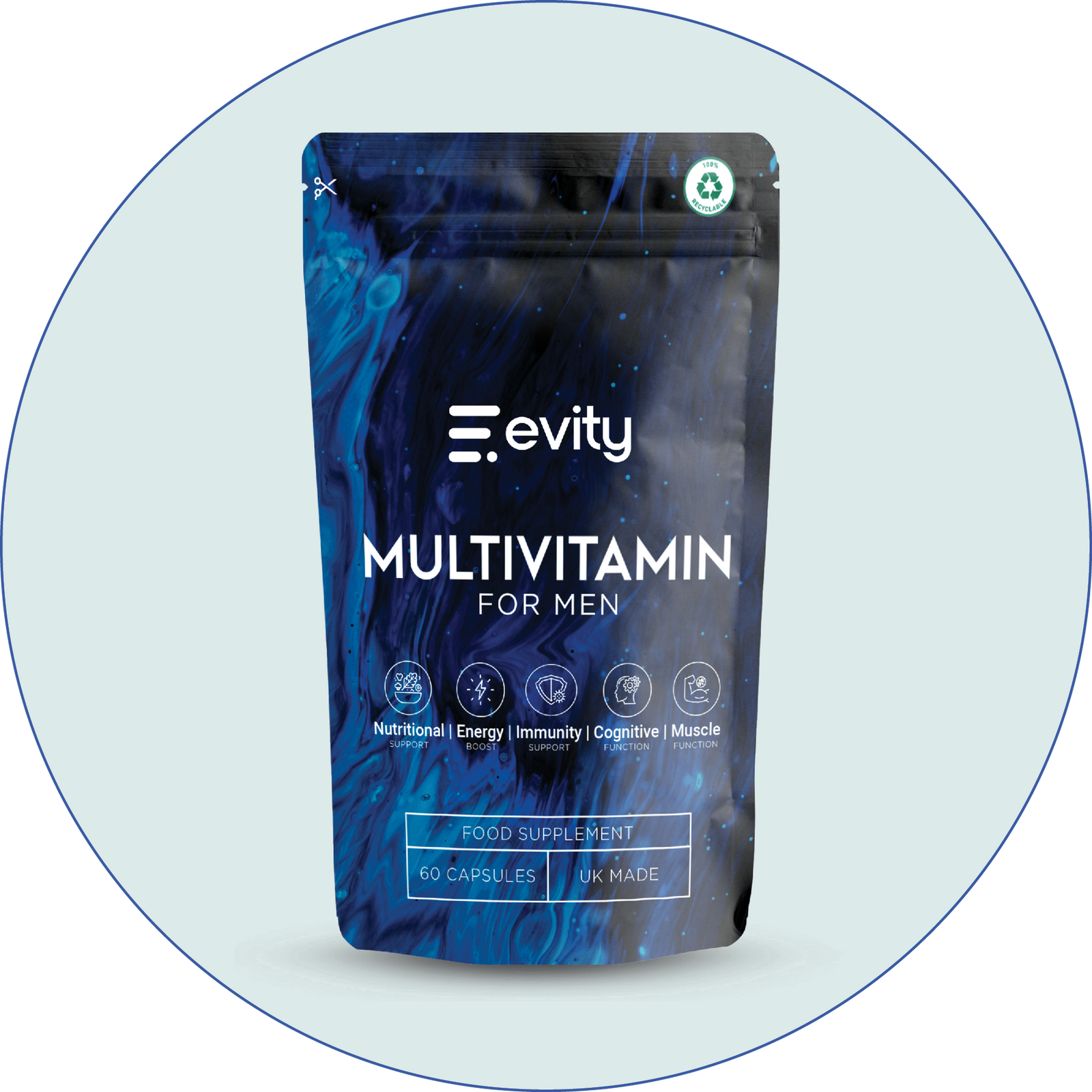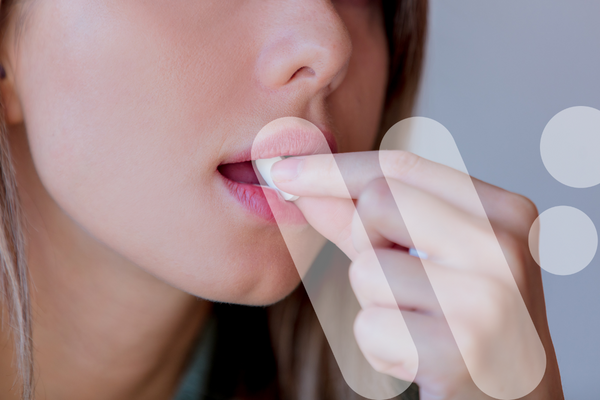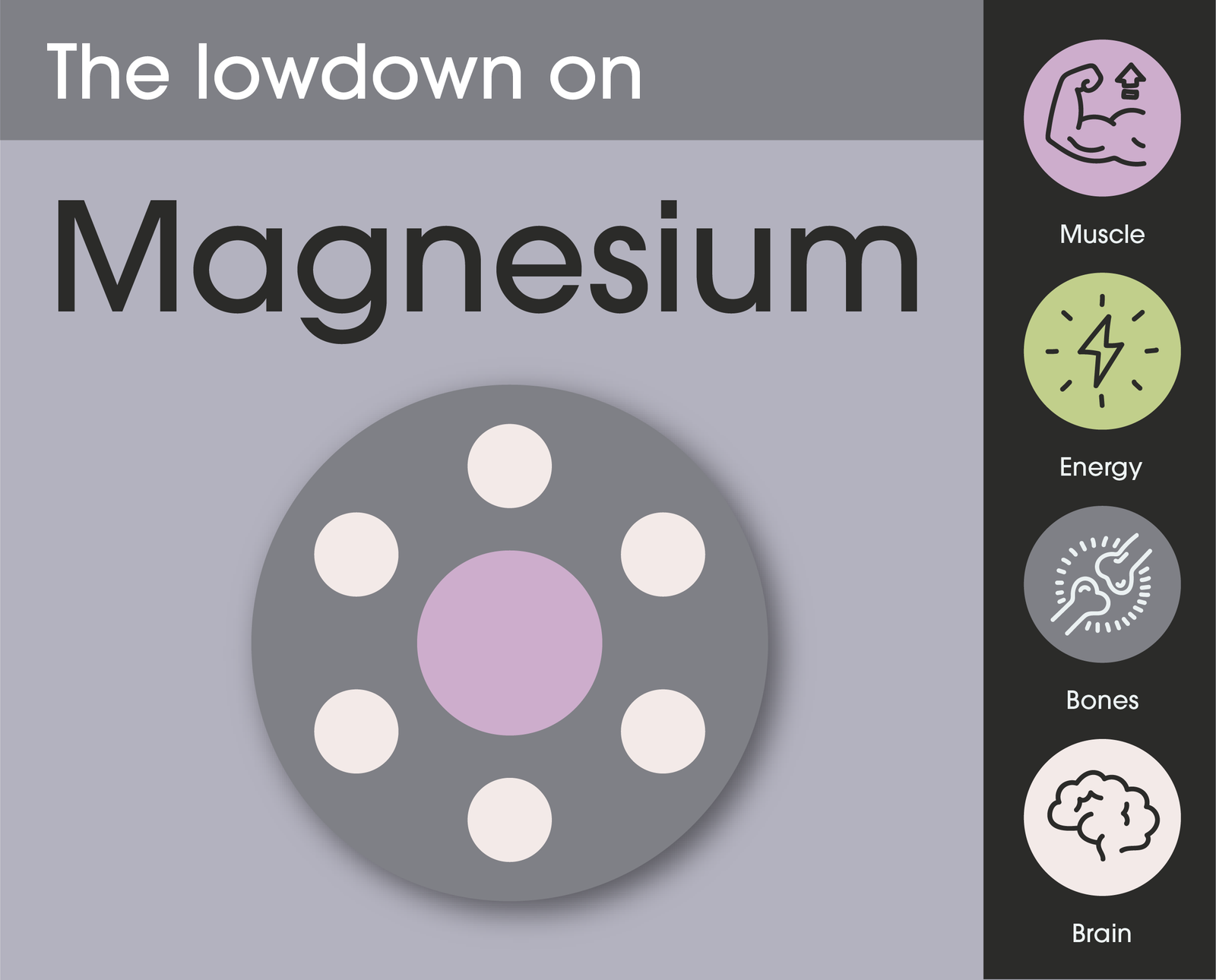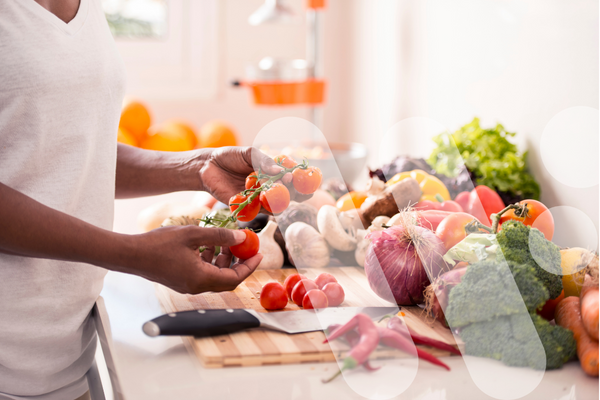
Benefits of Iron in the body
Iron deficiency anaemia
Iron deficiency anaemia occurs when the body lacks enough healthy red blood cells to get oxygen arounds the body. If our our organs, tissues and cells aren’t getting enough oxygen, this can lead to fatigue, poor cognitive function andbreathlessness (1).
Fights fatigue
Studies show that increased iron intake helps people to feel lesstired, but it doesn’t seem to improve physicalperformance (2,3).
Cognitive function
Iron has also been shown to improves brain function in children and adolescence when they have insufficientintake (4)
Why evity's form of iron is superior
Here at evity we use Iron Glycinate, that’s because it has higher levels of absorbability in the body compared to ferrous sulphate when phytates ( a substance found in plants, that impacts absorption within the body) are in thediet (5). Glycine (hence glycinate!) is an amino acid that is used in the formation of haemoglobin, so is the perfect partner for Iron. It has lower toxicity, less food reactivity, less food interactions and has a longer shelf life than any other common form of iron. For more information on importance of nutrient forms, checkout our bloghere.
Foods rich in iron
Red meats (such as beef, lamb and pork), offal and shellfish (particularly oysters!) are a rich sources of iron, and the bonus is the iron they contain is easily absorbed by the body. Other animal proteins such as fish and poultry are also great sources.
Plant-based sources of iron include;
- Pulses and legumes (such as beans, peas, and lentils).
- Dark green vegetables (such as spinach, kale and broccoli).
- Nuts and seeds.
All bread sold in the UK, other than wholemeal, must be fortified (with iron, calcium, thiamine and niacin), the same as many breakfast cereals.
Did you know?
Vitamin C increases absorption of the iron, whereas phytates found in wholegrains, teas and coffees can block absorption.
Daily recommended intake of iron
|
Population group |
Daily iron requirements |
|
Adolescent males (11-18) |
11.3mg |
|
Adult males (19+) |
8.7mg |
|
Females 11-50 years (pre-menopause) |
14.8mg |
|
Adult females (post-menopause) |
8.7mg |
UK dietary surveys indicate that many menstruating women are not getting enough iron via their diet.
Latest research of iron
Breath holding in children
Up to 4.6% of under twos have experienced an episode of holding breath until losing consciousness. In a review of a number of studies supplementation with iron was found to have potential to reduce severity andfrequency (6).
Restless leg syndrome
This is a really common condition in pregnancy andpost menopause and is also related to low iron levels (7,8).
Iron and gut flora
The latest studies show that probiotics, prebiotics and existing gut flora have an impact on iron absorption and status (9).
Problems with overdose
For children aged 14 years an over, iron supplementation is likely safe up to the daily upper tolerable limit, which is 45mg of elemental iron. Over this limit there is a risk of build up of iron which can lead to iron toxicity.
This limit does not apply to those suffering from iron anaemia who should have their iron levels diagnosed, monitored and treated under medical supervision.
Hemochromatosis is a genetic disorder that is often under-diagnosed. It’s a condition where the body cannot balance its iron levels and ends up overloaded causing illness (10). Iron intake must be monitored and supplements not taken in the condition. The symptoms including fatigue, might also be associated with iron anaemia. For this reason, it would also be advised to get a blood test for your iron levels, never self-diagnose or take high levels of iron in supplements without medical supervision.
References
- https://www.nhs.uk/conditions/iron-deficiency-anaemia/
- https://pubmed.ncbi.nlm.nih.gov/29626044/
- https://efsa.onlinelibrary.wiley.com/doi/epdf/10.2903/j.efsa.2010.1740
- https://pubmed.ncbi.nlm.nih.gov/20100340/
- https://www.sciencedirect.com/topics/medicine-and-dentistry/iron-glycinate
- https://www.cochrane.org/CD008132/BEHAV_iron-supplementation-for-the-treatment-of-breath-holding-attacks-in-children
- https://onlinelibrary.wiley.com/doi/abs/10.1111/j.1423-0410.2010.01368.x
- https://www.cureus.com/articles/41299-unraveling-the-mysteries-of-restless-leg-syndrome
- https://www.mdpi.com/2072-6643/12/7/1993
- https://www.nhs.uk/conditions/haemochromatosis/

